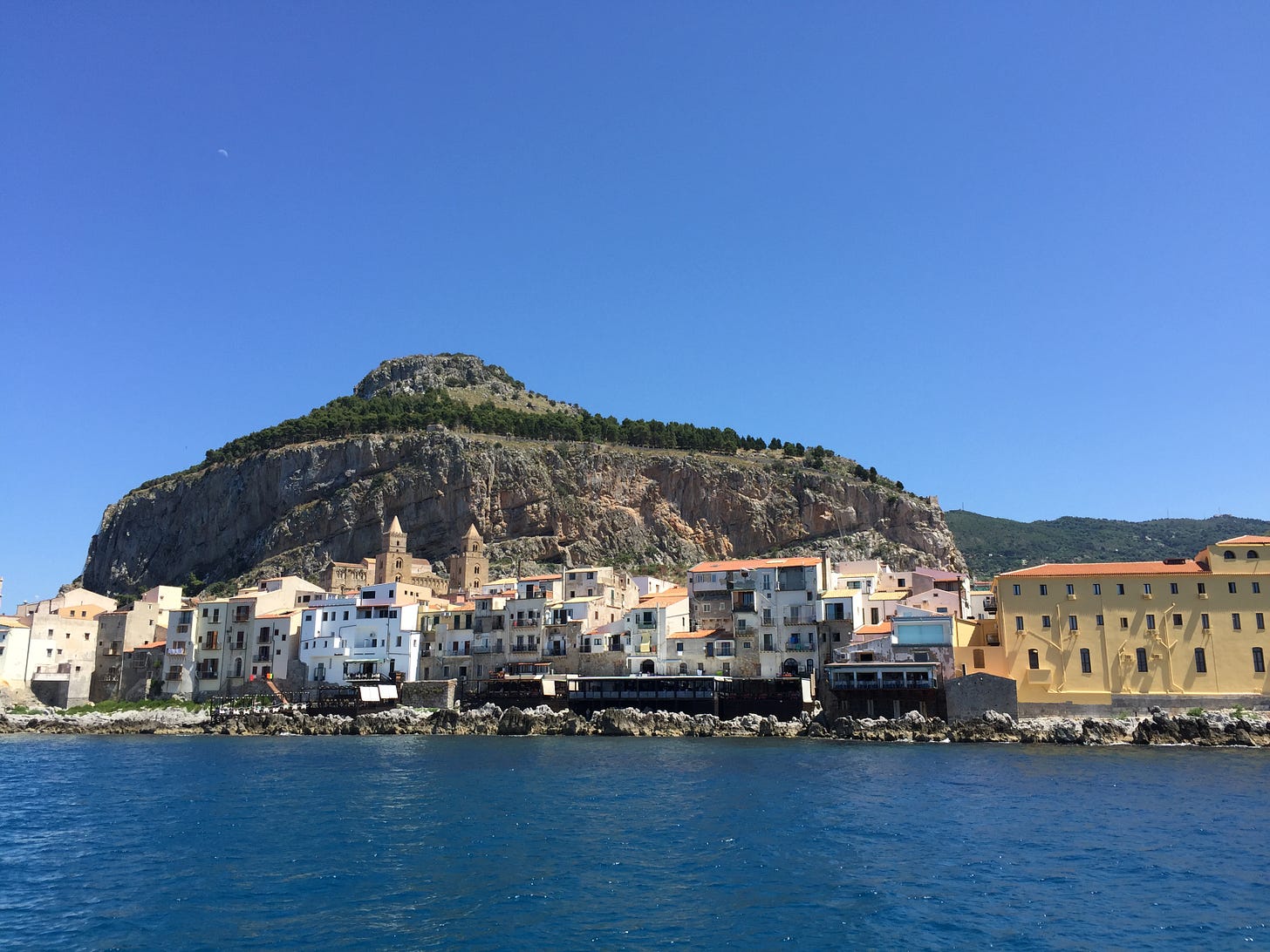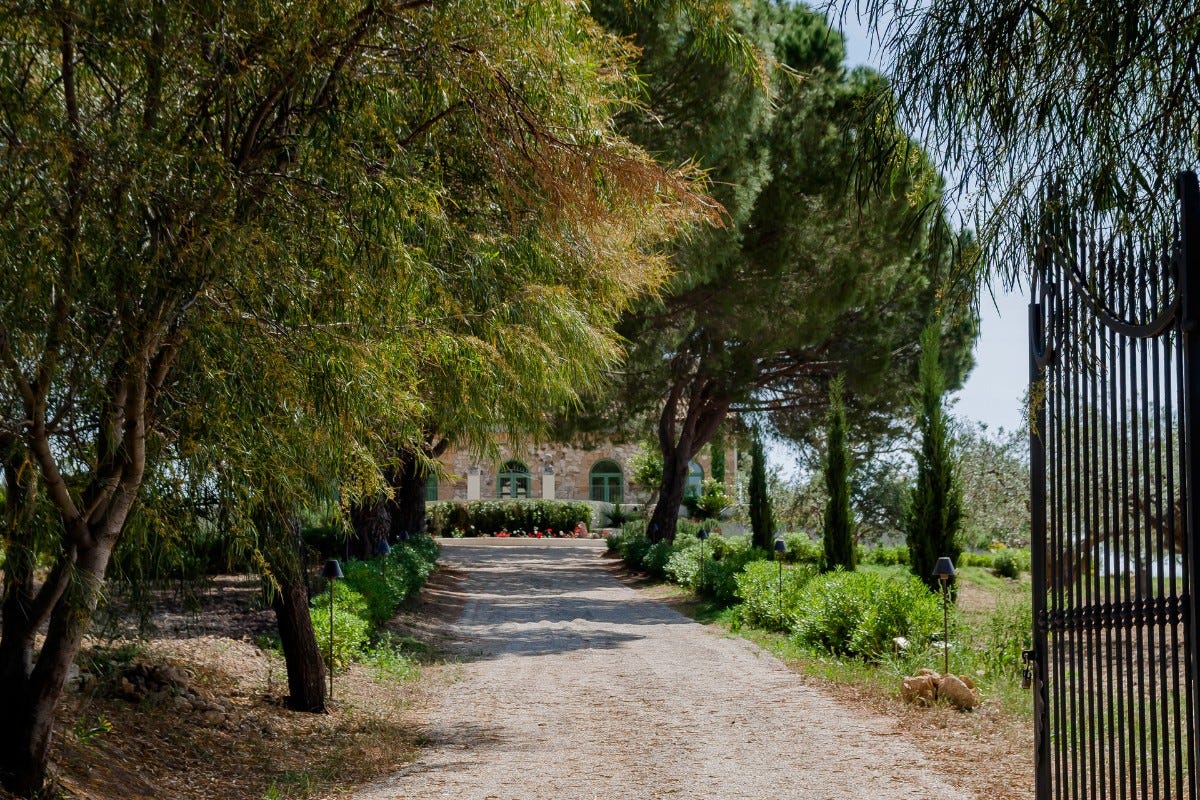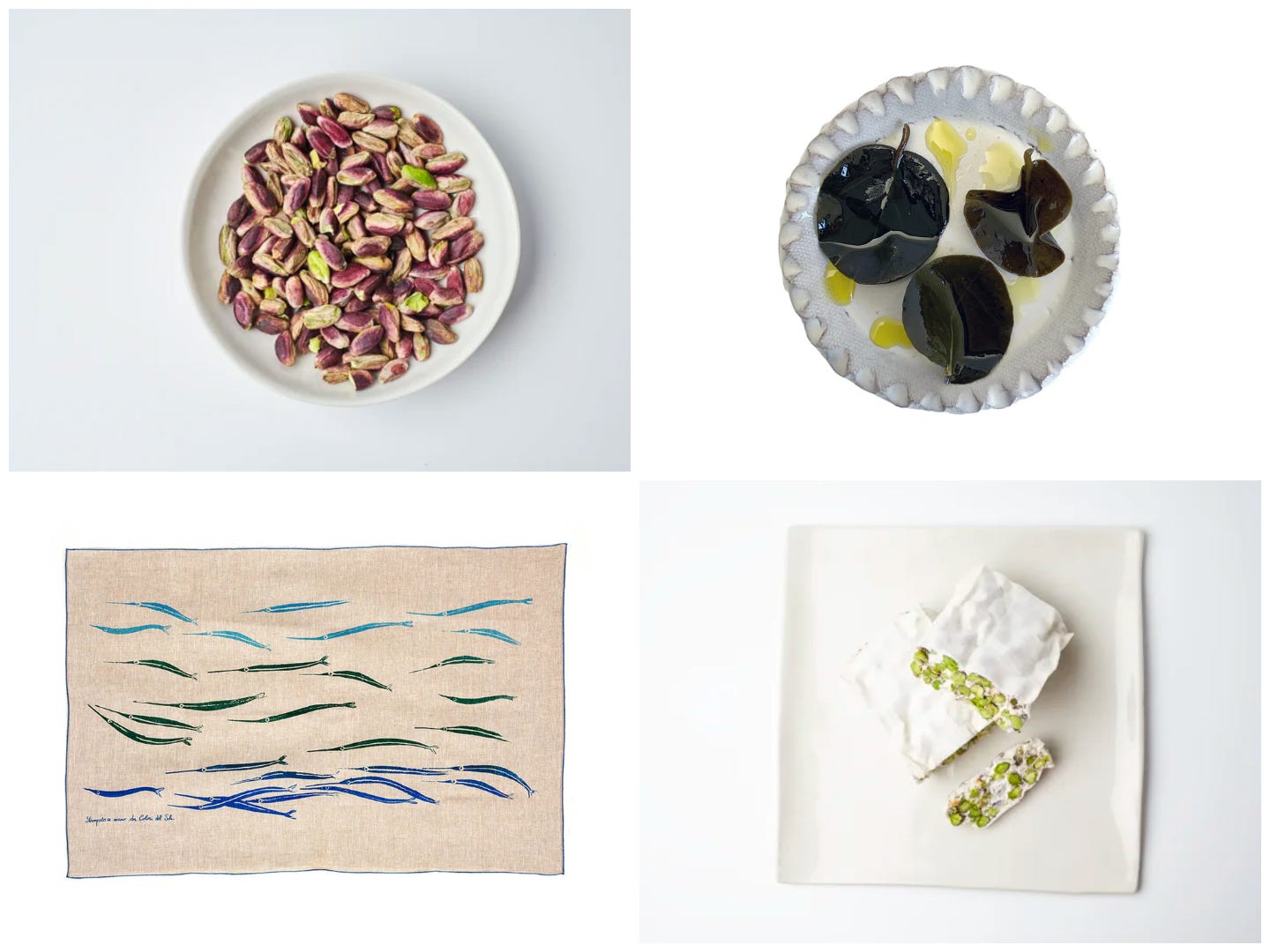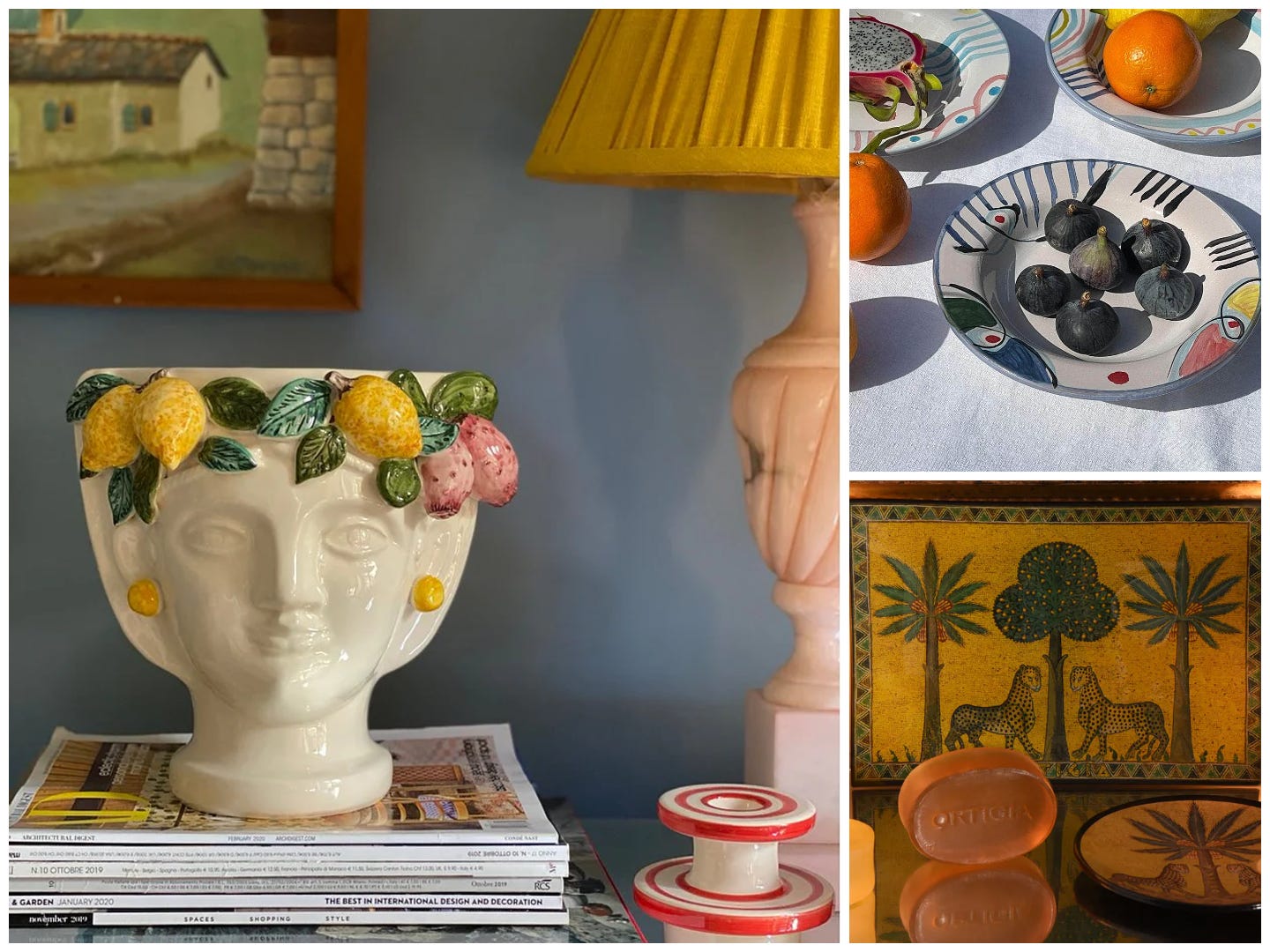A Not So Obvious Guide to Sicily, Part 1: Cefalù, Agrigento, Plus Books, Movies, and Goods
Plus Sicilian indulgences to enjoy at home.
You can treat it as its own universe. The Sicilians certainly do.
At the Beach in Cefalù
We met Gaia Miccichè when we spent a few early summer days at Le Calette, her family’s five-star hotel on the water outside Cefalù. (They also run the quieter Alberi del Paradiso amid the trees on the other side of town.) Staying at Le Calette was a dream (we wrote about swimming around quiet coves, kayaking around the coast, and the pistachio pasta that we couldn’t stop eating), and the town itself is just so charming. We asked Gaia to design a perfect day for us. She didn’t disappoint:
Gaia’s Perfect Day in Cefalù
The seaside town of Cefalù weaves together history, culture, and scenery that stirs the soul. Start the day with a hike 270 meters above sea level to La Rocca, where the ruins of the 9th-century BCE Temple of Diana stand watch over sweeping views of the coast. Back in town, wander the cobbled lanes to reach the majestic Arab-Norman Cefalù Cathedral — an UNESCO World Heritage Site — and the Mandralisca Museum, home to Antonello da Messina’s enigmatic Portrait of a Man.
By late morning, pause for an artisanal gelato or granita at our pastry shop, Mon Chou-Chou. (Interested in Sicilian pastry traditions? Book a cooking class with our pastry chef.) Spend the afternoon sinking into the stillness of Calette Beach, along our private stretch of shoreline. Head back into town in the late afternoon to meandering Via Vittorio Emanuele and Via Bordonaro, browsing boutiques filled with local crafts. If you’re lucky, you’ll catch local fishermen mending their nets.
Spend sunset with an aperitivo on the tiny balcony at Petit Tonneau, where views over the old harbor help set the mood. Dinner awaits under the white canopies of Al Capone, tucked away in the silent countryside among old mills and timeless Sicilian flavors.
Cefalù is like that: intimate, sun-washed, and quietly unforgettable — the perfect companion to an extraordinary Mediterranean escape.
In the Hills of Agrigento
Agrigento, a hilltop city on Sicily’s southwest shore, is the 2025 Italian Capital of Culture. Throughout the year, the city will celebrate with festivals, projects, and workshops that reflect air, water, earth, and fire — the theory of four elements by Empedocles (the ancient philosopher born in Agrigento) – to promote cultural transformation.
During the time of Magna Grecia, there were more Greeks living in the colonies of southern Italy and Sicily than there were Greeks actually living in Greece. You’ll find the most important archaeological site reflecting this at the UNESCO World Heritage Site Valle dei Templi (Valley of the Temples), the country’s best-preserved complex of temples to Hera and Concordia. (The temple to Zeus has unfortunately been dismantled over the centuries.) The night tours are beautiful.
Fontes Episcopi is a special farmhouse kitchen experience, an idealized version of what you would imagine if you were doing your own Under the Sicilian Sun kind of thing. Everyone we have ever sent here has delighted in cooking around the giant wood fire, rolling out rustic pizzas, and sharing in the love of culinary labor. You can spend a few nights learning cooking techniques, swimming in the pool, picnicking in the countryside, and helping with the olive or almond harvests.
On the Page and On the Screen
You already saw how beautiful Sicily is in season two of White Lotus, and so did everyone else, which is why poor Taormina has been overrun with Americans in the past two years. These are better and more evocative — and more Sicilian — Sicilian sagas that were born on the page and adapted to the big and little screens.
The Leopard
Giuseppe Di Lampedusa’s novel about a noble family during Italian unification in the 1860s was the basis for Luchino Visconti’s film, the pillar of Italian cinema starring Burt Lancaster, Claudia Cardinale, and Alain Delon that won the Palme d’Or at the Cannes Film Festival in 1963. And because everything old is new again, this year it was made into a Netflix series.
Novel: Bookshop.org | Amazon
Film: Apple TV
TV Series: Netflix
The Lions of Sicily
The sweeping family story that tells of the rise from poverty to wealth, based on The Florios of Sicily by Stefania Auci, is like a Sicilian Bridgerton. If 1700s London society had anarchy, capitalism, revolution, murder, and sun-swept beaches.
Novel: Bookshop.org | Amazon
TV: Disney Plus
In the Kitchen
Susafa is a luxurious hotel and cooking school with serious ecological cred located amid rolling, golden wheat fields in the Madonie mountains near Palermo. (We’ve told you about it before.) They take their wheat seriously — having tended to it for centuries — which explains why flour is a key ingredient in many of the dishes offered in their cooking workshops led by chef Rita Sireci. If you want to recreate the flavors at home, start with this easy bread recipe.
Pane Casareccio Integrale (Traditional Whole Wheat Bread)
Ingredients
700 grams whole wheat flour (ideally their Balata flour)
300 grams unbleached flour (ideally their Scialamba flour)
650/750 ml water
8-10 grams yeast
50 grams extra virgin olive oil
20 grams sugar
20 grams salt
Preparation
In a standing mixer, combine flour, yeast, and sugar. Add the water gradually, followed by salt and oil. Knead for about 8-10 minutes until you get a uniform dough. As soon as it’s ready, take the dough out of the stand mixer, put it in a container you can seal tightly, and let it rest overnight in the fridge.
The next day, divide the dough into four equal parts. Work each one to expel all the air pockets. Shape the loaves and put them in baking trays covered with baking paper and let them rest for about 40 minutes over a pot of hot water placed inside the oven, with the oven turned off.
Preheat the oven to 410° (210° Celsius). Before baking the bread, sprinkle water on the dough and add flour or sesame seeds to decorate. Make slits along the surface and bake for 20 minutes, then lower the temperature to 340° (170° Celsius) and cook for another 20-25 minutes.
In the Shopping Cart
Green Gold
Near Mount Etna, Bronte’s fruity and toothsome pistachios take on an incredible emerald hue (hence the nickname). ($44)
Caper Leaves in Extra Virgin Olive Oil
Harvested by hand on the island of Pantelleria, they have a hint of saltiness and are a great accent in salads and fish dishes. ($18)
Caffè Sicilia’s Torrone
A soft and sliceable version of the traditional Italian sweet, made with Bronte pistachios or Noto almonds, from the famed Sicilian pastry chef Corrado Assenza. ($37)
Linen Beach Towel
An elegantly fishy silk-screened beach towel from Colori del Sole (“colors of the sun”) comes in blue and green tones. (€55)
Bitter Orange Marmalade
San Giuliano is an organic, family-run orchard that makes small batches of this marmalade from blood oranges. ($22)
Yellow Raffia Basket Bag
It’s not subtle, but nothing in Sicily is. Also available in blue, turquoise, green, and in pom-pom variations. ($228)
Silk Scarf
Frescoes reinterpreted as a chic summer head wrap or thrown over the shoulders on a cool night. ($320)
Sicilian Moro Head
The island is famous for its ceramics, notably its vase busts inspired by a Sicilian folktale. A variety of elegant modern versions are designed by Lia Briamonte and handmade in Caltagirone. ($493)
Colorful Ceramic Bowl
Unique and handpainted in Casa Celva’s studio overlooking the Mediterranean. ($39)
Glass Plate and Scented Soap
Ortigia Sicilia’s decorative packaging is iconic. Bath and body products are made in small batches with Sicilian ingredients and inspired by the colors and scents of the tropical island. ($36)
There’s too much for one newsletter. Next week, we’ll go to Palermo, Ragusa, Ortigia, and Sciacca. And we’ll have outstanding Sicilian wine.










Sicily is still on my wish list!
Please! Send Part Two!